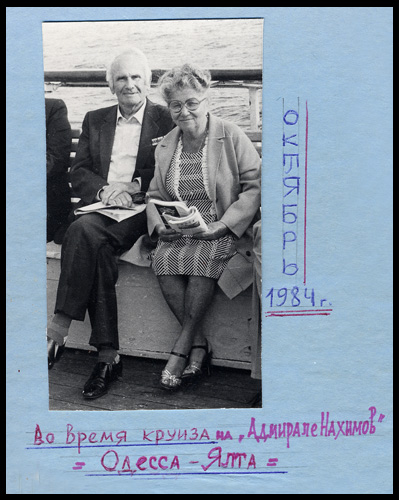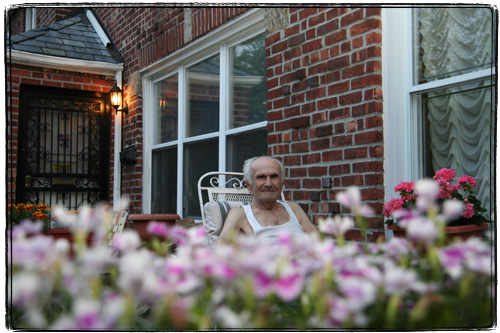People walking by my cubicle often pause and look at a picture hanging on my wall. It’s of an old lady in what looks like a meter maid’s uniform. Who is she? Why is this picture so important to you? – they ask.
The picture, of course is of one of the two patron saints of software developers, Rear Admiral Murray Grace Hopper. Admiral Hopper is an old school hacker, mother of Cobol, popularizer of the term “bug”. There is a missile destroyer named after her, her personal motto is very close to my heart, and she looks a little bit like my grandmother (who happened to be a mechanical engineer).
The second prominent woman in software is Augusta Ada King, Countess of Lovelace, and a celebration of her life is the reason I am writing this post. Countess Lovelace is famous for grokking what computer programming was all about back in Victorian era, and therefore is often reffered to as the first programmer. If I’ll ever make it out of a cube into an office, I’ll comission an oil portrait of Ada Lovelace and hang it there.
There aren’t many accomplished women in technology as these two, so someone came up with an idea of celebrating Ada Lovelace’s birthday by getting people to write blog posts that will draw attention to women excelling in technology. I chose to write about Temple Grandin. I would have written about my grandmother, but unfortunately I don’t know much about her life’s work.
I learned about Temple Grandin from an article in Wired magazine called “The Geek Syndrome“. It was an article about an explosion of cases of autism and Asperger’s syndrome in hotbeds of technology such as Silicone Valley. This article and Temple Grandin’s books, “Thinking in Pictures” and Emergence: Labeled Autistic made me see myself and other techies in a completely different light. I am convinced that some level of autism is what makes people get involved in technology. Being a geek is a bit like having homosexual sex: anybody can do it, very few try it, and only a minority enjoy it and are good at it.
According to wikipedia “the word geek is a slang term, noting individuals as “a peculiar or otherwise odd person, especially one who is perceived to be overly obsessed with one or more things including those of intellectuality, electronics, etc.”[1] Formerly, the term referred to a carnival performer often billed as a wild man whose act usually includes biting the head off a live chicken, bat, snake or bugs.” Indeed, geeks are strange people. They obsess about things, they have unusual interests, they are incredibly detail-oriented. All of these traits are considered by psychologists to be symptomes of Autistic Spectrum Personality disorder or ASD. “Impaired social interaction and communication” – another geeky/autistic trait.
“The prevalence of ASD is about 6 per 1,000 people, with about four times as many boys as girls” – also, according to Wikipedia. Eerily, this seems to be more or less in line with overall percentage of people involved in technology and the male/female ratio.
A human mind is a self-aware and self-adjusting multi-level software/hardware combination, and that makes it very hard to talk about the nature of brain disorders. Autism is particularly tricky: it is a spectrum. People with autism range from those severely afflicted and non-verbal through hundreds of different gradations to a geek with strange hobbies and social interaction problems. Yet it is the same basic thing: some kind of overdevelopment of some areas of the brain and underdevelopment in others, as well as a difference in processing sensory input.
Temple Grandin started out a severely afflicted autistic child, pretty close to the upper end of the scale. She recoiled from being hugged, started speaking very late, had all kinds of behavioral problems. Even with her high IQ nobody expected her to become a very succesful professional. She was lucky in having parents who sent her to a specialized school, and some teachers who channeled her obsessions into productive direction. She describes herself as a “recovering autistic.”
Her professional success is tremendous. She became a foremost expert in livestock handling equipment. Before her the livestock industry did not pay a lot of attention to the way animals were handled and transported. Existing structures used to shuffle livestock from a place to a place had design flaws that would cause animals to balk and refuse to move. This caused unnecessery use of force, stressing the animals and their handlers, costing farmers and processors a lot of time and money. Temple Grandin’s attention to detail allowed her to figure out very subtle causes of animal’s discomfort (autistic people are frequently bothered by minute changes in their environment) and figure out better ways to handle them. It’s very likely that all of us at some point drank milk or ate a steak from a cow that went through a facility designed by Dr. Grandin.
Autism seems to be a hardware-based disorder, something to do with neuron distribution and signal sensitivity. The curious part about problems like that is that they sometimes can be fixed with a software patch and changing some external factors. For instance, if you have a defective computer processor that starts generating errors from overheating, you can fix it by writing error-checking software and cooling it down with a fan.
After seeing a squeeze chute used to calm down cattle, Temple Grandin ivented a so-called hug machine, a device that applies a deep body pressure and through it makes autistic people feel better.
In his book Jpod, Douglas Coupland describes how one cubicle dwelling game developers builds a hug machine. After some ridicule and a few tryouts the machine attracts a long line of software developers wanting to use it. I wonder if any of the Google offices have one. I, personally, find that taking a long bath or wrapping very tigtly in a blanket always calms me down. Even better is diving: I get an unusual sense of calm from it.
Dr. Grandin’s books opened my eyes to the traits of “engineer’s affliction” and allowed me to better understand myself and my fellow geeks. Here’s a short list of the autistic traits that you might find in most software developers:
* Liking to create lists
* Lack of eye contact
* Stimming: repetitive behaviors like rocking in a chair
* Strange patterns of speech
* Ranting, long speeches about obscure topics
* Excruciating attention to detail
* Love of routine, dislike of change
* Love of symbols
* Obsessions with obscure things
* Superior pattern recognition
* Visual thinking
* Liking things more than people
* Bouts of anxiety, especially in social situations
Wired has a test designed by Simon Baron-Cohen (Borat’s brother) – you can see how many typical autistic traits you have. My score is 31.
The good part is that autistic obsessions can be “cashed in” for professional success in technological fields. Think about the level of obsession or concentration necessary to design a computer processor like this one? On the other hand, Dr. Grandin’s books showed me that it is possible to work on problematic traits, like eye contact and social awkwardness. Human minds are strange loops, capable of understanding, rewriting and fixing themselves.
Here’s a list of books that I recommend for better understanding of techies, male and female:
* Thinking in Pictures: And Other Reports from My Life with Autism and Emergence: Labeled Autistic by Temple Grandin
* Jpod and Microserfs by Douglas Coupland
* A Spot of Bother and The Curious Incident of the Dog in the Night-Time by Mark Haddon.

